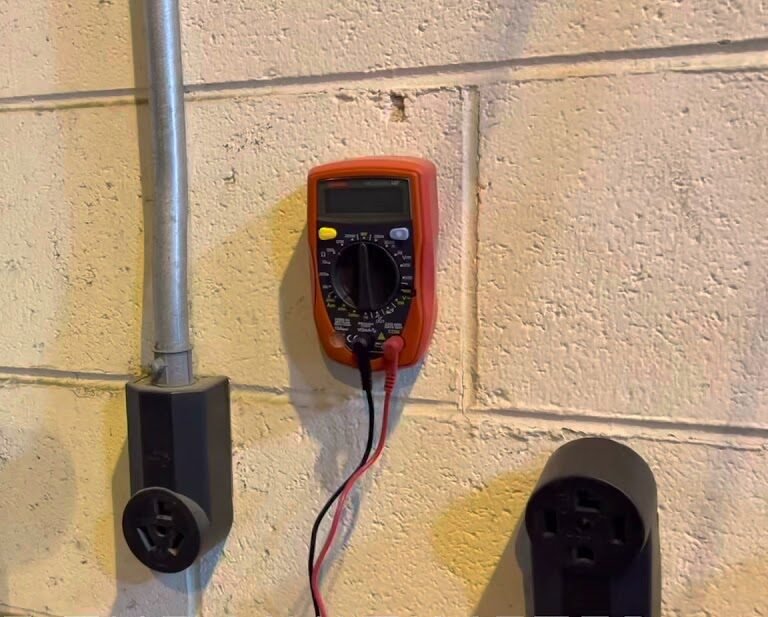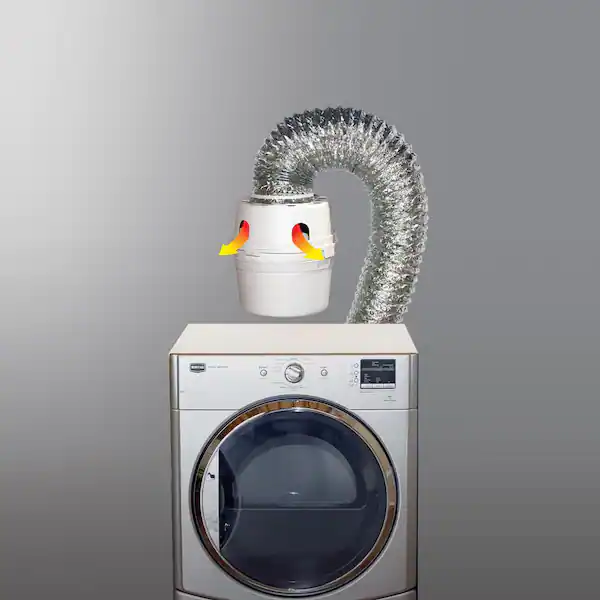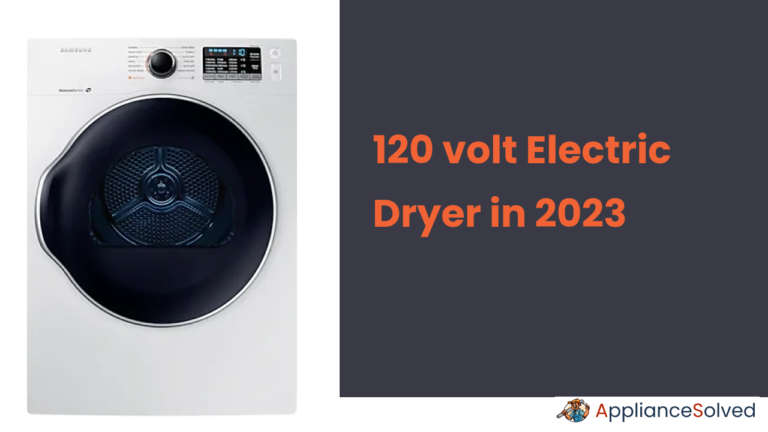How to Test Dryer Outlet: Ensuring Safety and Efficiency
Your trusty dryer has faithfully dried your clothes for years, but have you ever considered the health of its power source? Your electric dryer outlet plays a crucial role in ensuring both safety and efficiency in your laundry routine. In this guide, we’ll take you through the essential steps on how to test dryer outlet, empowering you to keep your appliance running smoothly while safeguarding your home.
What are Dryer Outlets?
Before diving into the testing process, let’s understand what a dryer outlet is and why it’s essential. A dryer outlet is a specialized electrical socket designed to power your dryer plug. It consists of three or four prongs, each serving a specific purpose in delivering the necessary electricity. Without a properly functioning outlet, your dryer won’t work efficiently, and worse, it can pose safety hazards.
Why You Need to Test Your Dryer Outlet?
You might wonder why test dryer outlet is necessary. The answer is simple: safety and efficiency. Over time, these outlets can wear out, leading to loose wires or damaged components. This wear and tear can cause overheating, short circuits, and even fires. Regular testing ensures that your dryer operates safely and at peak efficiency, saving you money on energy bills. Read dryer outlet height guide.
Safety Precautions
Safety should be your top priority when dealing with electrical systems. Before attempting any testing, follow these essential safety precautions:
- Turn Off the Power: Locate your home’s circuit breaker and switch off the power supply to the dryer outlet.
- Wear Protective Gear: Don safety goggles and insulated gloves to protect yourself from potential electrical shocks.
- Use a Voltage Tester: Before touching any wires, use a voltage tester to ensure the outlet is truly de-energized.
Tools and Equipment
To get started with test dryer outlet, you’ll need the following tools and equipment:
- Multimeter: This device allows you to measure voltage and current, essential for diagnosing outlet issues.
- Screwdriver Set: Needed for opening the outlet cover.
- Flashlight: Provides better visibility when inspecting the outlet.
- Wire Cutter/Stripper: Useful for trimming wires if needed.
Step-by-Step Guide: How to Test Dryer Outlet With Multimeter?
Now, let’s walk through the process of testing your dryer outlet:
1. Turning Off the Power
Begin by locating your home’s circuit breaker panel and switching off the power supply to the dryer outlet. Double-check with a voltage tester to ensure no electricity is flowing to the outlet.
2. Removing the Outlet Cover
Use a screwdriver to carefully remove the outlet cover. This will expose the outlet’s wiring and terminals. Handle all components with care.
3. Testing Voltage and Current
With your multimeter set to voltage, test each prong of the outlet. You should get a reading between 110-120 volts. If not, there may be an issue with the electrical supply to the outlet.
4. Checking for Loose Wires
Inspect the wires connected to the outlet. Tighten any loose connections with a screwdriver or pliers. Loose wires can cause electrical arcing, which is hazardous.
5. Verifying Grounding
Ensure that the outlet is properly grounded by checking the grounding wire. This wire is essential for safety and must be securely connected.
6. Testing the Outlet with a Load
Plug in your dryer and turn it on to test the outlet with a load. If it’s working correctly, your dryer should operate smoothly without any issues.
7. Interpreting Test Results
Analyze the readings from your multimeter. If everything falls within the expected range, your dryer outlet is in good shape. However, if you encounter any abnormalities, consult a professional electrician.
How to Test a 3-Prong 220v outlet Dryer Outlet?
If you have a 3-prong dryer outlet, follow these additional steps:
Prepare Your Multimeter
Set your multimeter to the AC voltage setting, usually represented by a “V” with a squiggly line (~) to indicate AC voltage.

Identify the Outlet Terminals
In a 3-prong dryer outlet, you’ll typically have two hot legs and a neutral terminal.
Test the Hot Legs
- Place one multimeter probe on the left hot leg terminal.
- Place the other multimeter probe on the top hot leg terminal.
- You should get a voltage reading between 110 and 120 volts for each hot leg.
Test Across the Hot Legs
- Place one multimeter probe on the left hot leg terminal.
- Place the other probe on the top hot leg terminal.
- You should get a voltage reading between 220 and 240 volts.

Ensure Proper Grounding
A good 3-prong outlet should have proper grounding for safety.
How to Test a 3-Prong 220v outlet Dryer Outlet?
If you have a 4-prong dryer outlet, follow these steps:
Prepare Your Multimeter
Set your multimeter to the AC voltage setting, as in the previous steps.
Identify the Outlet Terminals
In a 4-prong dryer outlet, you’ll have two hot legs, a neutral terminal, and a ground terminal.
Test the Hot Legs, Neutral, and Ground
- Place one multimeter probe on one of the hot leg terminals.
- Place the other multimeter probe on the other hot leg terminal.
- You should get a voltage reading between 220 and 240 volts for the hot legs.
Test the Neutral and Ground
- Place one multimeter probe on the neutral terminal.
- Place the other multimeter probe on the ground terminal.
- You should get a voltage reading close to zero volts, as they should be bonded at the service panel.
Ensure Proper Grounding
In a 4-prong outlet, the separate ground terminal provides an additional safety measure.
how many volts is a dryer outlet?
A standard residential dryer outlet in the United States is typically 240 volts. This voltage is necessary to provide the power required to operate the heating element in the dryer effectively, allowing it to generate the heat needed for drying clothes.
Frequently Asked Questions Test Dryer Outlet
Is my dryer outlet 220 or 240?
Dryer outlets in residential settings typically provide a voltage of 220-240 volts. These terms are often used interchangeably, and both voltages are within the standard range for dryer outlets. So, your dryer outlet is essentially providing 220-240 volts.
Do dryers use 110 or 220?
Dryers primarily operate on 220-240 volts, not 110 volts. This higher voltage is necessary to power the heating element in the dryer effectively, allowing it to generate the heat needed for drying clothes.
Is a dryer outlet 120 or 240?
A standard residential dryer outlet is 240 volts, not 120 volts. The higher voltage is required to handle the heating element’s power demands and efficiently dry your clothes.
Do electric clothes dryers only require a 240-volt outlet?
Yes, electric clothes dryers typically require a 240-volt outlet for safe and efficient operation. This voltage is necessary to provide enough power to heat the dryer and effectively dry your clothes. It’s important to ensure that your dryer is connected to the correct voltage for it to function properly.
How do I know if my dryer outlet is bad?
You can determine if your dryer outlet is bad by observing certain signs:
- No Power: If your dryer isn’t receiving any power or fails to turn on, it could indicate a faulty outlet.
- Inconsistent Heating: If your dryer isn’t heating properly or the temperature fluctuates dramatically, the outlet may be at fault.
- Visible Damage: Inspect the outlet for physical damage, scorch marks, or loose wires, which are clear indicators of an issue.
- Burning Smell or Sparks: If you notice a burning smell or see sparks when plugging in your dryer, it’s essential to address the problem immediately.
How do I test a 220 outlet with a multimeter?
To test a 220-volt outlet with a multimeter, follow these steps:
- Set your multimeter to the AC voltage setting.
- Insert one probe into one of the hot leg terminals.
- Insert the other probe into the other hot leg terminal.
- Your multimeter should read between 220 and 240 volts. This reading confirms that the outlet is functioning correctly.
What is the voltage of a 4-prong dryer outlet?
A 4-prong dryer outlet typically has a voltage of 220-240 volts. This higher voltage is necessary to power the heating element in your dryer effectively.
What voltage is a 3-prong dryer outlet?
A 3-prong dryer outlet usually has the same voltage as a 4-prong outlet, which is 220-240 volts. The difference lies in the configuration of the prongs and the grounding system. While both provide the necessary voltage, 4-prong outlets are considered safer and are the modern standard.
How often should I test my dryer outlet?
It’s advisable to test your dryer outlet annually to ensure safety and efficiency.
Can I test my dryer outlet without a multimeter?
While a multimeter is the most accurate tool, you can perform a basic visual inspection for loose wires and signs of damage.
What should I do if I find a loose wire?
Carefully tighten the loose wire using a screwdriver or pliers, ensuring it’s secure and not exposed.
Is it safe to test the outlet myself?
With proper precautions, testing your dryer outlet can be safe. However, if you’re uncomfortable or unsure, it’s best to consult a professional electrician.
What are the signs of a faulty dryer outlet?
Common signs include sparking, overheating, burning smells, and irregular dryer performance.
When should I call a professional?
If you encounter any issues during testing that you’re not confident in addressing, or if you suspect a major problem, it’s wise to contact a qualified electrician for assistance.
Conclusion
Regularly testing your dryer outlet is a responsible and essential maintenance task for every homeowner. It ensures not only your safety but also the efficiency of your dryer. By following the steps and safety precautions outlined in this guide, you can confidently maintain your dryer outlet and enjoy worry-free laundry days.







